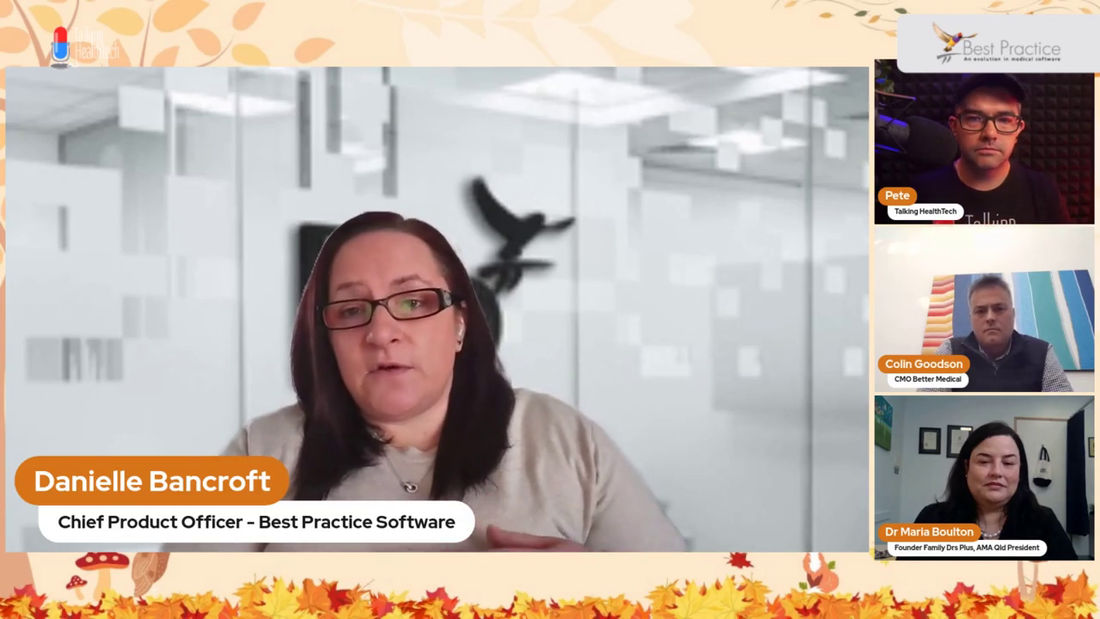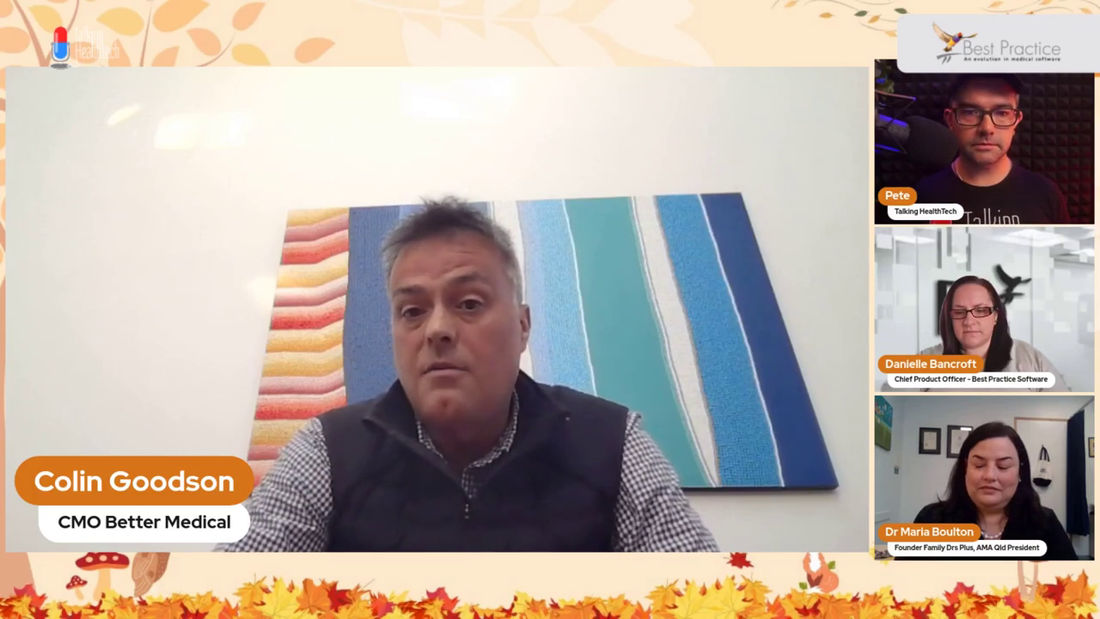Talking HealthTech: 356 – Reflections on General Practice Reform in Australia, Autumn Summit 2023

Source: talkinghealthtech.com

Provided by:
Talking HealthTech
Published on:
13 June 2023
A session at the recent Talking HealthTech Autumn Summit focused on how General Practitioners (GPs) can adapt to the current environment of change and do their best work. As the healthcare system continues to change, it’s more important than ever for GPs to understand how to get funding, make sure their practices are sustainable, and take on the challenges and opportunities that lie ahead. Dr. Colin Goodson is the Chief Medical Officer of Better Medical. Danielle Bancroft, the Chief Product Officer of Best Practice, and Dr. Maria Boulton, founder of Family Doctors Plus and Corporate Doctors Plus and President of AMA Queensland, will share their knowledge on the reforms in General Practice.
GP Reform: Creating Sustainable Healthcare Transformation
In the ever-evolving realm of healthcare, GP reform holds different meanings for different people, and the timing of addressing it is crucial. With recent budget announcements and grants for GP clinics, the opportunity to discuss practical implementations and approaches to navigate reform measures is now available. Analysing clinic demographics and leveraging analytics tools like the patient-centred reporting from Cubiko can provide valuable insights into the potential impact of incentive changes. By embracing reform opportunities and adapting to the evolving healthcare landscape, clinics can enhance their sustainability and position themselves for success in the future.
A GP’s Perspective on healthcare transformation
Colin shared his journey from the UK to Australia and his role within Better Medical Group. Originally from the UK, Colin trained and worked as a GP during the 2004 contract reforms before relocating to Australia in 2012. He started as a tenant doctor in a small practice in Adelaide, which grew into a group partnership with four clinics. In 2019, they sold the clinics to Better Medical Group, and Colin joined the leadership team. Despite the challenges posed by COVID-19, his role expanded to include various aspects of the business, ensuring a GP perspective in decision-making. He continued his clinical practice while leading a team of doctors, navigating budget changes, and strengthening Medicare grants for improved patient care. Dr. Colin’s journey exemplifies the importance of clinician input in shaping healthcare organisations and driving positive change.

Innovation and Advocacy
Maria, a general practitioner with twenty years of experience, discusses her journey as a medical business owner, emphasising the challenges of dwindling government funding and labour shortages. She emphasises the significance of innovation and financial viability, actively pursuing new technologies that facilitate more efficient work. Entrepreneurial in nature, she and her business partner evaluate the viability of new concepts against their business plan. With the recent budget announcements, Dr. Maria urges practitioners to assess the impact on their practices and make decisions in line with their objectives. Her story illustrates the need for resiliency, adaptability, and strategic planning to provide quality care in an ever-changing healthcare environment.
Enhancing Efficiency
Amidst the challenges healthcare clinics face, recent budget announcements and conversations have raised hopes for improvement. However, it’s essential to acknowledge that not all reform initiatives suit every clinic. Clinic owners should assess their unique situations, collaborate with partners like primary health networks, and embrace digital solutions to enhance efficiency and provide an omnichannel patient experience. This approach ensures scalability and improved patient care in the future.
Scalability
While some healthcare professionals are eager to adopt new technologies, others are resistant due to unfamiliarity or a preference for traditional methods. Implementing advancements can be challenging, but the recent budget allocation for primary care has boosted morale, highlighting the government’s commitment to a stable healthcare system. Funding models prioritise disadvantaged patients and encourage team-based care. Despite clinic variations, technologies like telehealth can improve access and leverage diverse expertise. It is crucial to support clinics individually while promoting consistent services. The goal is to enhance patient care by embracing and utilising available technologies.

Tailored Healthcare
In the dynamic world of healthcare, a one-size-fits-all approach falls short for clinicians. Listening to local practitioners and communities is crucial in Queensland’s diverse markets, including rural and remote areas. Maria advises aligning with providers who understand and adapt to specific clinic and doctor requirements, making life easier and improving healthcare outcomes.
Co-designing Digital Health
Balancing ease of use with data protection is crucial due to industry regulations. Patient safety is a priority when disrupting healthcare. Co-designing with clinicians and patients, involving various stakeholders, leads to effective technologies supporting seamless patient pathways. Successful examples include e-prescribing during the pandemic. Collaboration among tech partners, clinicians, and patients is vital for a design system that meets healthcare expectations.

Usability Challenges
The healthcare industry has significant hurdles in data interoperability and cyber security. The presence of several passwords and authentication methods can slow down technology adoption by clinicians. Adoption is only possible by adequately managing and securing the ecosystem. The varied applications of technology across clinics result in less valuable data. The question of who owns the data has yet to be answered. Interoperability and cooperation are necessary components to accomplish transdisciplinary collaboration and real-time data availability. Integration of technical systems throughout all of the clinics is essential for providing the best possible care.
Key Takeaways
Incorporating care provided by teams into the existing funding models and highlighting the significance of continuity of treatment, particularly for patients suffering from chronic conditions. The goal of modifying the budget drives this progress. The medical community is encouraged to welcome these shifts openly and self-evaluate their practices to pinpoint weak spots. It is encouraged to investigate digital solutions and potential technology partners to improve the patient’s experience. Interoperability of data, patient-centred care provided by teams, and healthcare reform are expected to recur often throughout the sessions.